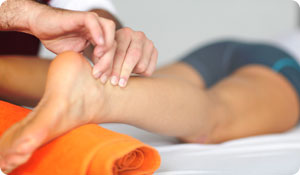
If you've resolved to start walking more, be sure you don't walk right into injury or pain. Follow our tips and avoid the five biggest walking problems.
Our number one tip? Prevention and preparation. Throw out your old sneakers and invest in good, well-constructed walking or cross-training shoes. According to the American Podiatric Medical Association (APMA), "An average day of walking brings a force equal to several hundred tons on them. They are subject to more injury than any other part of the body, underscoring the need to protect them with proper footwear."
Your new walking shoe should give your toes wiggle room, your arches plenty of support, and enough padding to absorb shock. Ask an athletic shoe specialist to evaluate your gait and arches and recommend a variety of shoes in your price range. Then, pick the shoe that feels best, right out of the box, without a "break- in" period.
1. Blisters: Even the best fitting shoe can cause blisters from friction, heat and sweating.
- Make sure your shoes aren't too tight.
- Powder your feet and shoes before walking,
- Use a blister-blocker gel or moleskin on spots where you've gotten blisters before.
- Wear socks that fit well. Some sport or tube socks are made of terrycloth-like material that may keep feet dry, but can also rub tender spots. Consider moisture-wicking socks that pull sweat away from your feet.
- As soon as you feel a "hot spot," stop walking, cover it with a bandage, and loosen your shoelaces to reduce further friction.
2. Plantar fasciitis is inflamed connective tissue that causes pain from heel to toe. It's caused by poor arch support, quick turns that stress the foot, extra-tight calf muscles, damage from long-distance running or pronation (a natural gait-variation).
- Wear the right shoe for your foot type.
- Stretch calf muscles after your walk.
- Wear orthotic arch supports, if necessary
- If you still get plantar fasciitis: apply the RICE treatment - Rest, Ice, Compression and Elevation and call your doctor.
3. Plantar Warts are benign skin growths on the soles of your feet. They're caused by the human papillomavirus (HPV) and while they're not dangerous, they can be irritating, especially on pressure points like your toes, ball, or heel.
- Prevent plantar warts by never sharing socks or footwear and wear shower shoes at the gym.
While plantar warts usually go away on their own and are generally resistant to self-treatment, some people swear that covering them with duct tape makes plantar warts fall off. If they're particularly bothersome, see your doctor to have them medically treated.
4. Achilles Tendonitis is inflammation, irritation, and swelling of the tendon that connects your calf muscles to your heel. It's caused by overuse, arthritis, under or over-stretching.
- Prevent Achilles tendonitis by stretching after you warm up with a 10-minute walk and again after you complete your workout.
- Treat Achilles tendonitis with the RICE treatment and call your doctor.
5. Shin splints are a painful inflammation of the connective tissue that attaches your calf muscles to the bones in your lower leg and usually caused by doing too much, too soon. To prevent shin splints:
- Wear proper footwear,
- Warm up at a relaxed pace
- Avoid going too fast, too far or up too many hills until you've gotten used to walking.
Treat shin splints with the RICE (rest, ice, compression, elevate) treatment.





